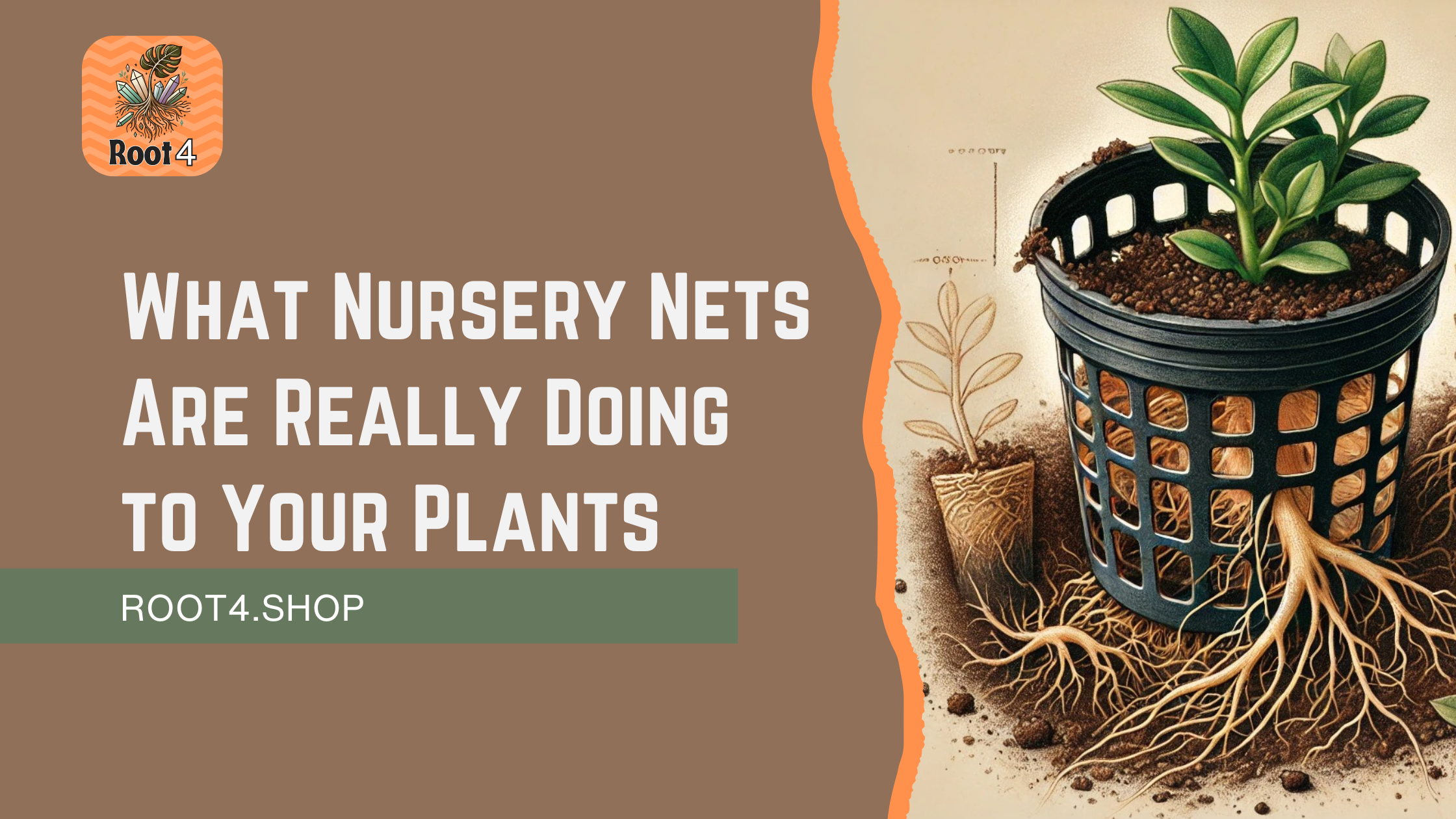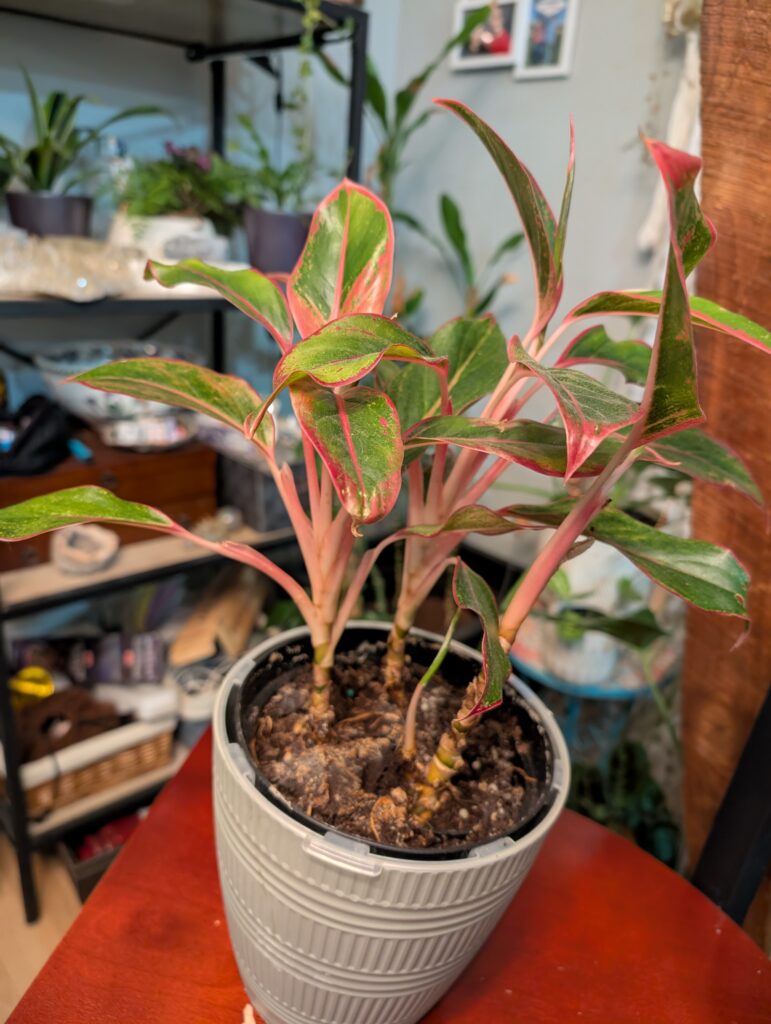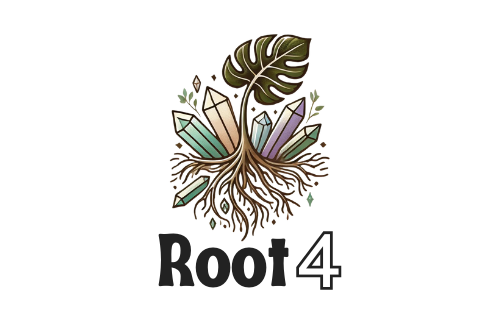Your cart is currently empty!

What Nursery Nets Are Really Doing to Your Plants
At Root 4, we believe that thriving plants start with freedom to grow—and sometimes that means giving them a fresh start from the roots up.
If you’ve ever bought a healthy-looking plant only to watch it stall out after a few months, you’re not alone. We’ve noticed this especially in Aglaonema, a popular low-light favorite. In fact, we had a group of Aglaonema plants that sat nearly stagnant for over a year—until we discovered the hidden culprit: nursery nets.
What Are Nursery Nets and Plugs?
Many growers start plants in small, netted plugs or biodegradable containers that keep the soil and roots intact during propagation. While these are helpful for large-scale operations and reducing transplant shock, they’re not always plant-friendly long-term—especially for slower-growing indoor plants.
These nets can:
- Restrict root expansion
- Cause roots to circle or tangle
- Limit nutrient and water uptake
- Ultimately stunt growth, even in good conditions
Our Experience: Proof in the Plants
After carefully removing the mesh wraps and separating the root-bound clusters, our previously sluggish Aglaonemas exploded with new growth. Vibrant foliage, stronger stems, and a visible difference in just weeks. The change was undeniable—and it wasn’t just anecdotal.



The Science Backs It Up
Research has confirmed what many plant lovers have learned by experience: root restriction matters.
A study published in HortScience found that small plug cell volumes limited root development and delayed shoot biomass accumulation even weeks after transplanting (source). This means that even after a plant is moved into a larger pot, the effects of early root confinement can linger.
Similarly, a study on lettuce seedlings showed that plants grown in small plug trays had reduced root mass and poorer shoot growth compared to those started in larger cells (source). The researchers concluded that container size and root freedom in early stages directly influence overall health.
TreeNet also reports that container design and root constriction impact long-term plant development, especially in woody species and perennials (source).
These findings emphasize that what happens underground—especially early on—can shape a plant’s success for years to come.
Why So Many Say Nursery Nets Aren’t a Problem
You might be wondering—if nursery nets can be so limiting, why do so many growers and plant influencers say they’re harmless? There are a few reasons:
1. Commercial Growers Prioritize Efficiency
Nets keep root balls intact, reduce transplant shock, and speed up production. Once the plant leaves the grower’s greenhouse, its long-term success is rarely tracked.
2. Influencers Don’t Always See the Aftermath
Many plant creators showcase repotting or new plant hauls, not the quiet suffering that can happen months later when roots are still trapped. Unless someone digs deep—literally—they may never make the connection.
3. Some Plants Power Through
Fast-growing species like pothos and philodendron often break through restrictions more easily. Slower-growing, delicate species (like Aglaonema, Calathea, or ferns) are more prone to subtle stagnation.
4. “Easy Care” Advice Dominates
Telling people to remove plugs or disturb roots goes against common social media advice like “just pop it in a new pot.” It feels riskier, even though it may be what the plant needs most.
5. Brand Loyalty and Partnerships
Some influencers have partnerships with growers or retailers and may avoid critiquing widespread practices. Others may simply not have noticed the impact yet.
At Root 4, we’re not here to blame—we’re here to offer better solutions and help you understand your plant’s real needs.
What You Can Do
If your plant isn’t thriving and came from a nursery plug or grower’s pot, gently check the root ball. If you spot any plastic or mesh netting, dense clumps, or circling roots:
- Remove the plug or net if it’s synthetic
- Loosen the root ball carefully before repotting
- Repot into fresh soil with room for the roots to stretch
This one small change could unlock the full potential of your plant.
Let Your Plants Breathe
At Root 4, we’re not just about selling plants—we’re about helping them (and you) thrive. From understanding what’s beneath the soil to supporting vibrant energy in your space, we’re here for your whole plant journey.
Got a plant that’s stuck in a rut? Bring it in—we’re happy to help assess whether a root refresh might be the missing piece.

Leave a Reply